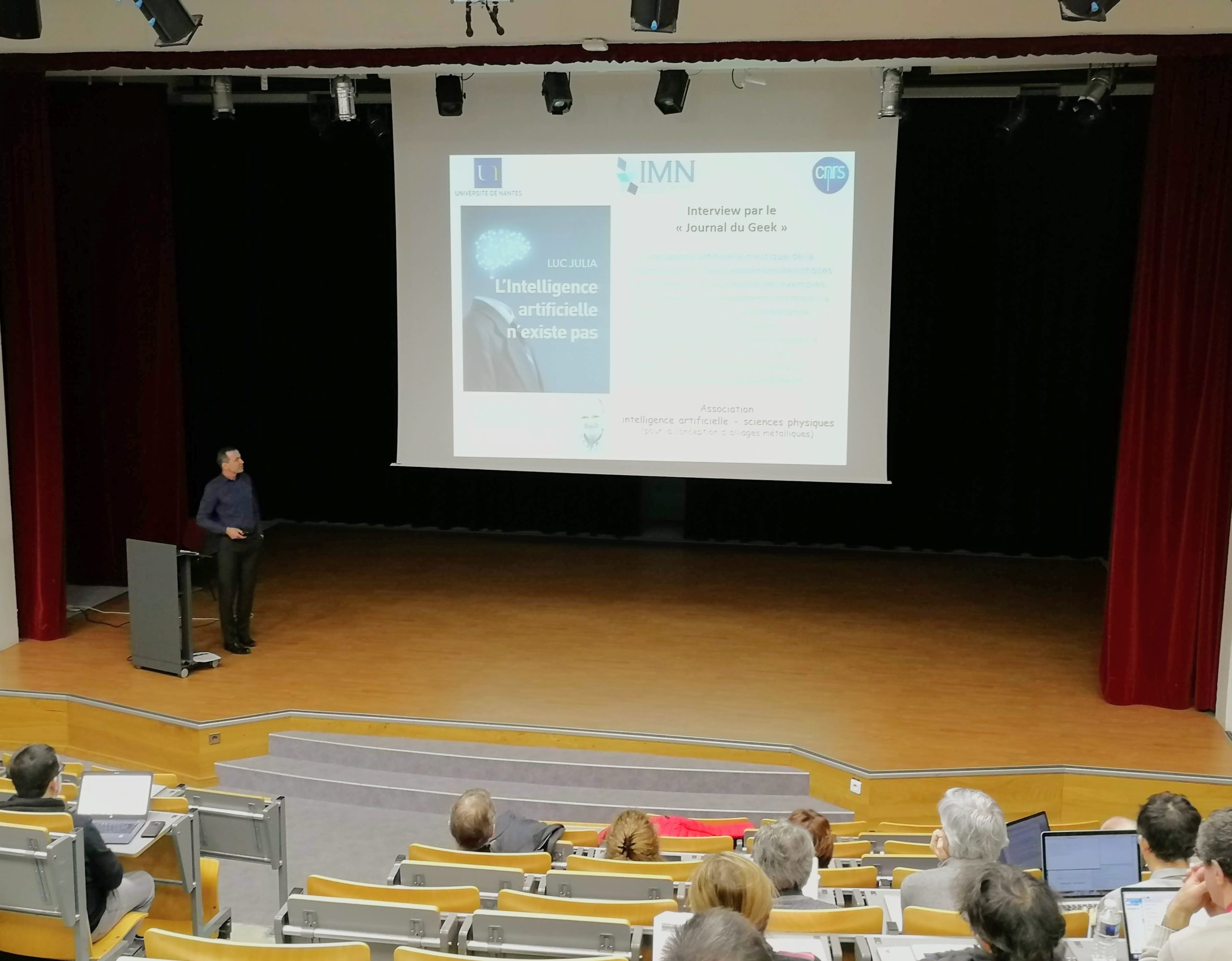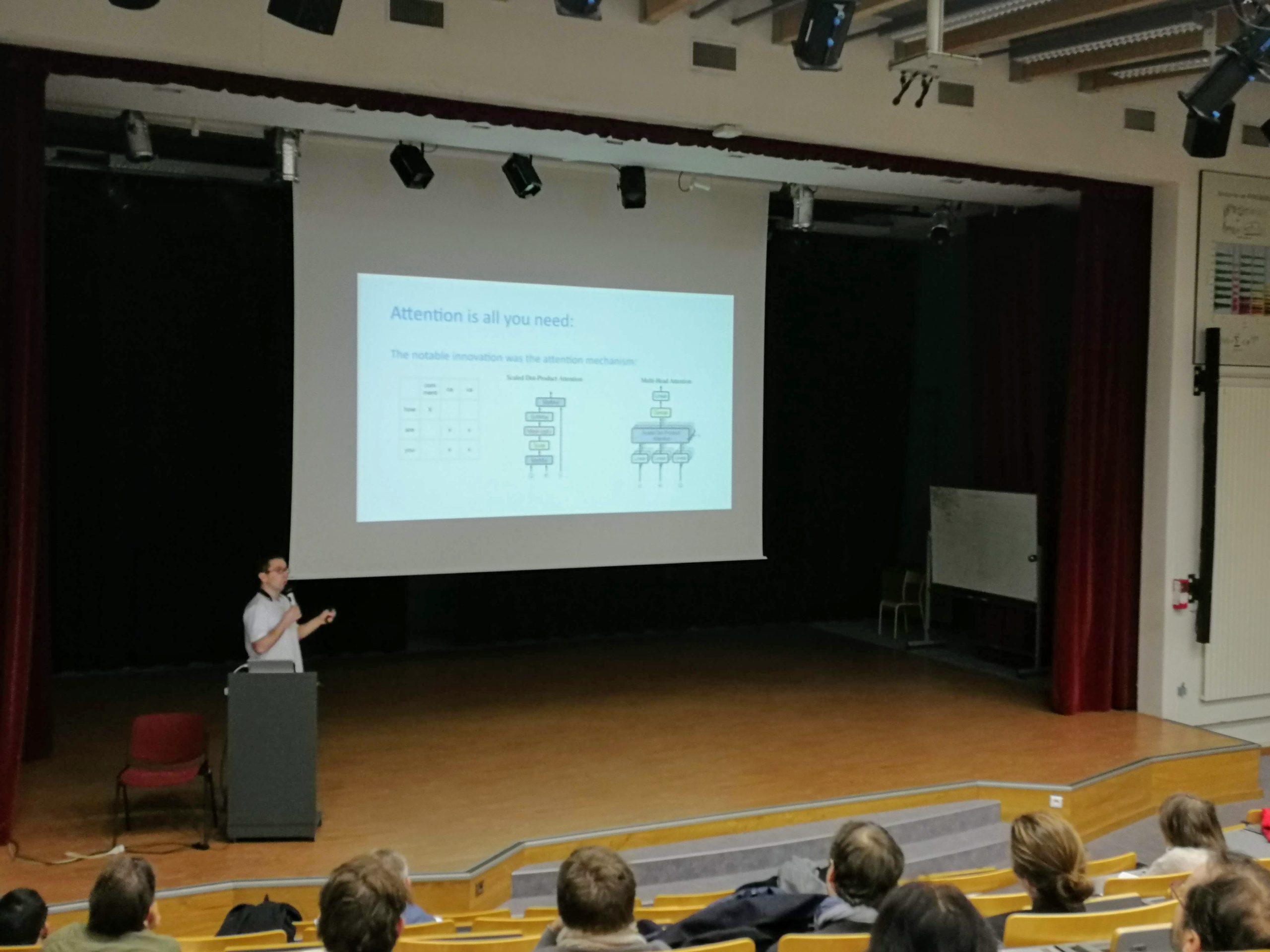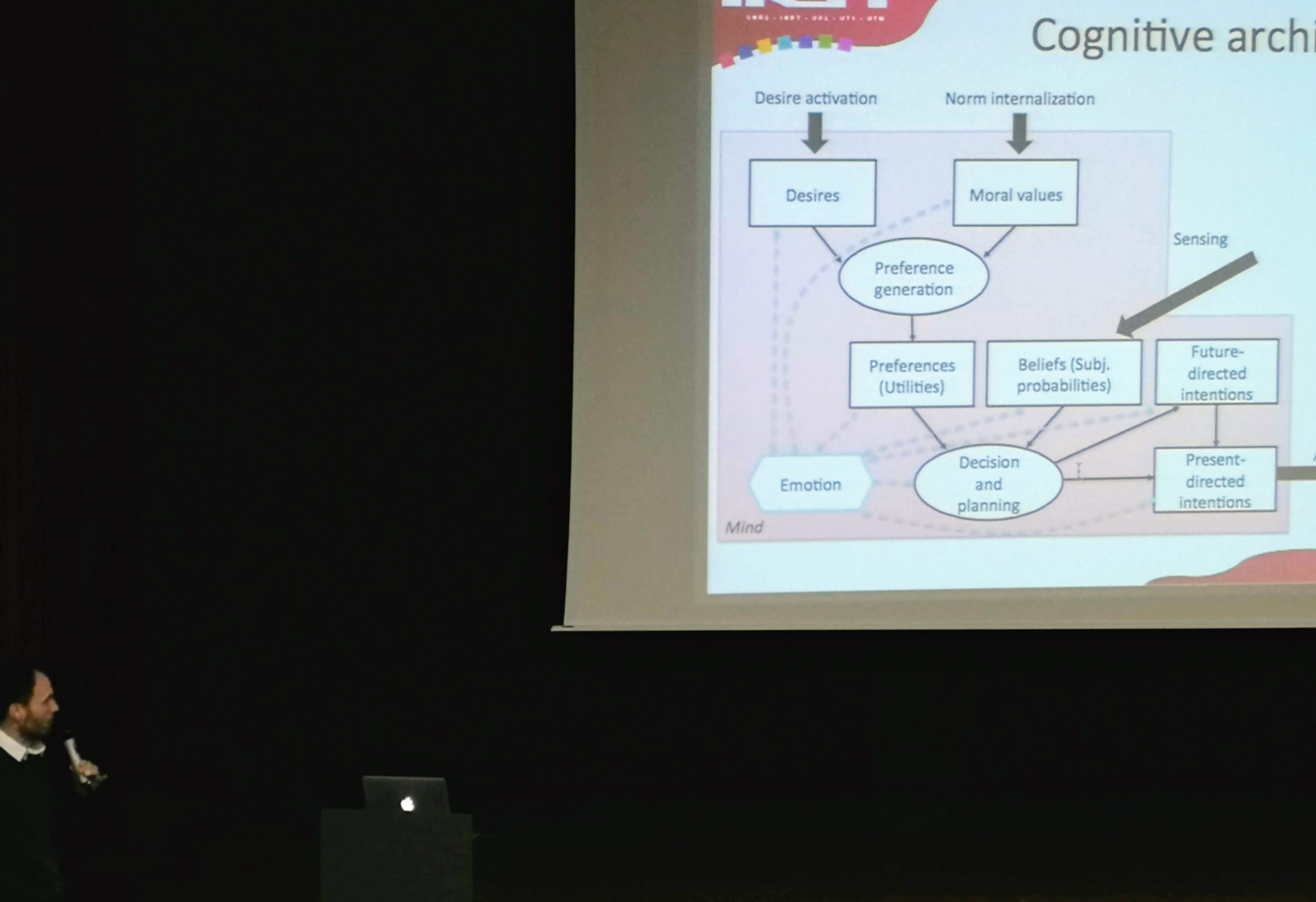Artificial intelligence in physics, chemistry and material physico-chemistry : How and why ? What kind of applications ?
On January, 29th, our first day « Les ouvertures de NanoX » gathered at INSA Toulouse about fifty teachers, students and researchers from all disciplines to hear experts share the lasts knowledges in artificial intelligence and how they use it in their field.
Twenty of them took part, the week after, in two days of hands on workshop to learn how to code a neural network and to integrate it in their work.



Conferences
Emiliano Lorini (IRIT, Toulouse) – Models of Cognition in AI
I will provide a general overview of the different approaches used in artificial intelligence (AI) for modeling human-inspired cognitive functions including deductive and inductive reasoning, decision-making, theory of mind (ToM) and mental simulation. I will discuss recent attempts to reconcile the logic-based symbolic approach to modeling cognitive functions with the neural sub-symbolic approach.
Franck Tancret (IMN, Nantes) – Association intelligence artificielle – sciences physiques pour la conception d’alliages métalliques
Le développement de nouveaux matériaux concerne potentiellement tous les secteurs d’activité. Cependant, l’étendue gigantesque de l’espace des possibles, offert par le tableau périodique des éléments, ainsi que la diversité des phénomènes physiques gouvernant l’assemblage des atomes, leurs interactions et les propriétés qui en résultent, posent deux problèmes sérieux au concepteur : un problème combinatoire et un problème de complexité physique. Malgré ces difficultés, la découverte et la mise au point de nouveaux matériaux a le plus souvent été réalisée de manière expérimentale par « essais-erreurs », ce qui est très long et coûteux, et plus récemment grâce à la modélisation. Toutefois, la simulation ne gère pas le problème combinatoire. En effet, en considérant un système à 50 éléments potentiels avec 50 teneurs possibles chacun, cela fait 5050 matériaux différents ; même si on admet que chaque calcul ne prendrait que le plus petit temps possible (la durée de Planck : 5,39.10-44 s), le temps de simulation de tous les matériaux possibles serait plusieurs ordres de grandeur supérieur à l’âge de l’Univers ! Par ailleurs, la modélisation ne permet pas à l’heure actuelle d’embrasser toute la complexité des phénomènes physiques gouvernant la structure, la microstructure et les propriétés des matériaux en fonction de leur composition.
On verra ici comment des méthodes issues de « l’intelligence artificielle » permettent de gérer ces deux problèmes (immensité combinatoire et complexité) afin de concevoir de nouveaux matériaux aux propriétés « sur mesure » ou optimisées. Ces techniques sont par exemple la fouille de données (« data mining » / « machine learning ») avec des outils comme les réseaux de neurones ou les processus gaussiens, l’optimisation multi-objectifs par algorithmes génétiques ou encore l’aide à la décision multi-critères. Le propos sera illustré dans le domaine de la métallurgie combinatoire. On montrera notamment comment les outils de l’intelligence artificielle peuvent –ou doivent– être associés ou couplés à des modèles à base physique, au travers d’exemples de conception de nouveaux alliages à hautes caractéristiques (thermo)mécaniques comme les superalliages à base de nickel ou les alliages dits « à forte entropie ».
Bertrand Georgeot (LPT, Toulouse) – Neural network simulations of chaotic systems
Learning methods from neural networks have undergone major developments in recent years, and are the basis of recent techniques of artificial intelligence that have found many applications in several fields.
The simulation of complex physical systems is one of the most difficult tasks to achieve by the current numerical methods. Very recent works have shown that it is possible to use neural network methods to perform such numerical simulations, based solely on time sampling of the past evolution of the system.
This could have promising applications in e.g. meteorology.
We will discuss recent works together with D. Guéry-Odelin of LCAR to apply these techniques to the simulation of chaotic systems.
Malik Tiomoko (CentraleSupélec, Université Paris Saclay, visiting student at GIPSA-lab, Université Grenoble-Alpes) – Random Matrix Improved Estimation of a Large Class of Distances Between Covariance Matrices
Many machine learning and signal processing applications rely on the estimation of the distance between covariance matrices (or the divergence between centered Gaussian measures). In practice, standard estimates simply replace the unknown population covariances by sample covariances ideally, even under few and large dimensional data: this, we will show, induces dramatic approximation errors. In this talk, based on advanced tools in random matrix theory, we present new consistent estimates of distances/divergences for a large family of metrics (Wasserstein, Fisher, Battacharyya, Frobenius, Kullbach-Leibler, Rényi, etc.). An application to spectral clustering will be discussed to support the strength of the proposed estimators.
Pierre Boudier (NVIDIA) – Introduction to machine learning outside of classification
In the past 10 years, deep neural nets have lead to great improvements in many image classification tasks and natural language tasks; however, how this success translates into other areas is not always obvious. Recently, new research has shown that machine learning, and more specifically deep neural network, can indeed be used for more symbolic tasks, and therefore be applied to different data structures. For instance, protein folding and mathematical expression integration tasks have shown promising results. In this talk, we will present some of those examples outside of the canonical examples of deep neural nets.
Fabien Alet ( LPT, Toulouse) – Les applications du machine learning en matière condensée
Dans cet exposé, j’essaierai de faire un bref survol d’une sélection d’applications des méthodes d’apprentissage automatique en matière condensée : reconnaissance des états de la matière à partir de données expérimentales ou numériques, reconstruction d’états quantiques, accélération des algorithmes de simulations, réseaux de neurones comme états variationnels pour les problèmes à N corps etc. Si le temps le permet, je présenterai deux applications récentes développées au sein du LPT Toulouse (travaux de thèse de H. Théveniaut) concernant la reconnaissance et la simulation de deux états exotiques de la matière (la phase localisée à N corps, et le liquide de Bose).
Clémence Corminboeuf (EPFL) – Quantum chemistry meets machine learning //cancelled
In this talk, we will discuss how statistical learning approaches can be leveraged across a range of different quantum chemical areas to transform the scaling, nature, and complexity of the problems that we are tackling. Selected examples will especially illustrate the power brought by kernel-based approaches in the large-scale screening of homogeneous catalysis, the prediction of fundamental quantum chemical properties.